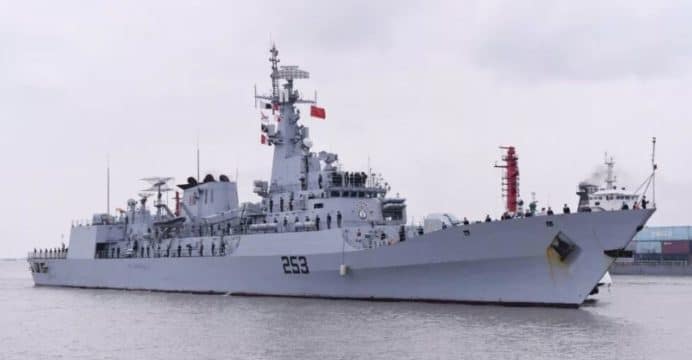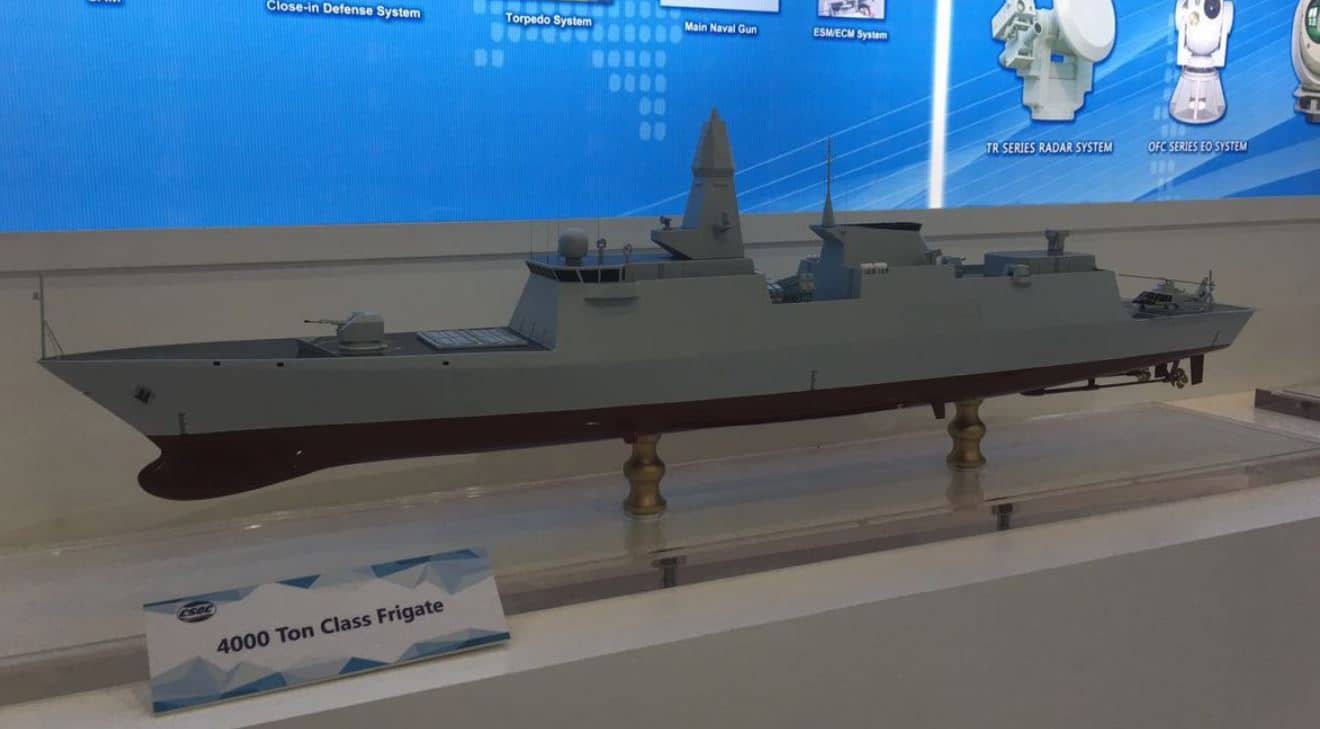Possible details of Pakistan’s frigate purchase from China:
The commanding officer of a Pakistan Navy frigate on a goodwill visit to China told Shanghai TV that the Pakistan Navy will procure the Type 054A frigate from China.
The Zulfiqar-class (F-22P) frigate PNS Saif was welcomed to Wusong Naval Port on December 01. The PNS Saif’s commanding officer, Capt. Shahzad Iqbal, told local media that the ship travelled “more than 9,000 nautical miles from Pakistan to Shanghai,” stopping by Sri Lanka and Thailand while en route to China.
Pakistan operates four F-22P frigates. Derived from the Type 053H3 patrol frigate, the F-22P is equipped for anti-submarine warfare (ASW) and anti-ship warfare (AShW) operations.
It is armed with two quad-cell (2×4) launchers for the C-802 anti-ship missile (AShM) and two triple (2×3) launchers for ET-52C lightweight ASW torpedoes. The F-22P is also equipped with an eight-cell FM-90N surface-to-air missile (SAM) system for short-range air defence (SHORAD) coverage.
Besides goodwill interaction, the PNS Saif will also participate in exercises with the People’s Liberation Army Navy (PLAN). During a Chinese media visit, Capt. Iqbal told Shanghai TV that the Pakistan Navy will procure Type 054A frigates from China. The Type 054A is the mainstay of the PLAN fleet.
Notes & Comments:
In October, the outgoing Chief of Naval Staff Adm. Muhammad Zakaullah announced that Pakistan had reached a deal to procure new frigates from China. Zakaullah did not specify the model of the new frigates or the number of ships the Pakistan Navy will be procuring. Reports from 2012 had pegged the Pakistan Navy procuring upgraded or improved versions of the F-22P.
If Shanghai TV is correct, Pakistan could be procuring one of the China Shipbuilding Industry Corporation’s (CSIC) 4,000-ton frigate designs. According to IHS Jane’s, the 4,000-ton frigate design is based on the Type 054A. It has an endurance of 21 days, length of 135 m, range of 4,000 nautical miles (cruising at 18 knots) and top speed of 26 knots. It has 32 vertical-launch system (VLS) cells, one 76 mm main naval gun, two 30 mm guns and a 24-cell FL-3000N point-defence missile system (PDMS).
The CSIC 4,000-ton frigate is available in two variants: one with a target-illuminator to guide the semi-active radar-homing (SARH) HQ-16 SAM. The second is without a target-illuminator, but longer VLS cells. The second variant appears to have been designed to carry SAMs with active terminal-stage seekers and potentially other kinds of missiles, such as land-attack cruise missiles (LACM).
The latter variant is interesting in that it would maximize the utility of the 4,000-ton frigate’s use of active phased-array radar (APAR) and passive over-the-horizon radar (OTHR). Using the China Educational Instrument and Equipment Corp (CEIEC) SLR-66 as a benchmark, the frigate’s APAR could have a range of 280 km, while the OTHR would have a range of 500 km. The OTHR would provide the ship with stand-off range air and surface surveillance coverage, while the APAR can guide long-range SAM and/or AShM. The VLS cells would bode well for potential LACM usage (Pakistan has the 700-km range Babur 2). Pakistan could also configure the ship to carry long-range SAM for area-wide anti-air warfare coverage.
The caveat to this is whether Pakistan will in fact proceed with the CSOC 4,000-ton frigates as shown in the models, or a pared down model to reduce costs. However, if pared down, these ships are still large enough to be upgraded with APAR, OTHR and heightened VLS cells in the future.
'via Blog this'


